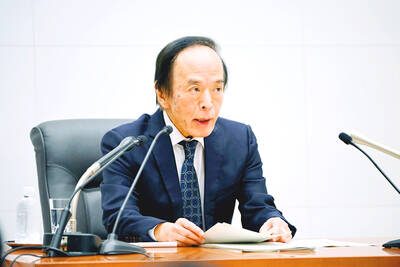Japan is sticking for now with its goal to balance its budget by the end of March 2026 even after approving record spending for next year.
“As we have written in this year’s government plans, we are still looking to reach a primary balance in the fiscal year 2025,” Japanese Minister of Finance Shunichi Suzuki said shortly after the Cabinet approved a record initial budget of ¥107.6 trillion (US$941 billion) for the year starting in April.
“We will reconfirm this by the end of March, after we have taken a closer look at COVID-19’s impact on Japan’s fiscal health,” Suzuki said.
Economists see the goal of balancing the primary budget by the end of March 2026 as unrealistic. The goal cannot be achieved this decade, according to the baseline scenario in a separate projection.
The primary balance excludes debt servicing costs.
However, the latest budget does offer encouraging signs that Japan is moving out of crisis mode and might be able to review efforts to start reining in the developed world’s biggest debt load over the coming years.
New issuance of bonds to finance the latest budget is down sharply to ¥36.9 trillion, although that still means Japan is financing more than one-third of its spending with debt.
Actual expenditure next year could also rise further, given the possibility of extra budgets, but with the economy taking less of a hit with each new variant of SARS-CoV-2, final outlays for the next fiscal year are more likely to end up lower than this year.
A jump in tax revenue also suggests that the government’s spending blitz during the COVID-19 pandemic has helped limit scarring to the economy and that the recovery would gain momentum once concerns over the Omicron variant of SARS-CoV-2 eases.
In this fiscal year, Japan put together three extra budgets that added ¥73 trillion to total spending.
“If you kill off parts of the economy, everything else falls down like a line of dominoes,” Sumitomo Life Insurance Co economist Hiroaki Muto said. “In that sense, Japan’s government should get a pass mark for its current situation.”
However, Muto, like other economists, does not see the 2025 goal as possible.
Many analysts see it more as a symbolic effort to reassure investors that Japan does take its debt predicament seriously.
Even before last month’s extra budget, the IMF forecast public debt hitting 256.9 percent of GDP this year.
Japanese Prime Minister Fumio Kishida is walking a fine line between seeking longer-term fiscal health while spending enough to both support the economy in the short term, and ensure growth in the long term.
Big-ticket items in the budget include burgeoning social security spending of ¥36.3 trillion, debt servicing of ¥24.3 trillion, ramped-up defense outlays and reserves to deal with COVID-19.
Next year’s budget also includes another ¥5 trillion in reserve funds for responding to the spread of COVID-19.
So far Japan has managed to avoid major outbreaks of the Omicron variant of SARS-CoV-2 that is rampaging through the US and UK, but that situation could swiftly change.
After finding the first case of community spread of the Omicron variant this week in Osaka Prefecture, another case was found on Thursday in neighboring Kyoto Prefecture.

Taiwan’s long-term economic competitiveness will hinge not only on national champions like Taiwan Semiconductor Manufacturing Co. (TSMC, 台積電) but also on the widespread adoption of artificial intelligence (AI) and other emerging technologies, a US-based scholar has said. At a lecture in Taipei on Tuesday, Jeffrey Ding, assistant professor of political science at the George Washington University and author of "Technology and the Rise of Great Powers," argued that historical experience shows that general-purpose technologies (GPTs) — such as electricity, computers and now AI — shape long-term economic advantages through their diffusion across the broader economy. "What really matters is not who pioneers

In a high-security Shenzhen laboratory, Chinese scientists have built what Washington has spent years trying to prevent: a prototype of a machine capable of producing the cutting-edge semiconductor chips that power artificial intelligence (AI), smartphones and weapons central to Western military dominance, Reuters has learned. Completed early this year and undergoing testing, the prototype fills nearly an entire factory floor. It was built by a team of former engineers from Dutch semiconductor giant ASML who reverse-engineered the company’s extreme ultraviolet lithography (EUV) machines, according to two people with knowledge of the project. EUV machines sit at the heart of a technological Cold

TAIWAN VALUE CHAIN: Foxtron is to fully own Luxgen following the transaction and it plans to launch a new electric model, the Foxtron Bria, in Taiwan next year Yulon Motor Co (裕隆汽車) yesterday said that its board of directors approved the disposal of its electric vehicle (EV) unit, Luxgen Motor Co (納智捷汽車), to Foxtron Vehicle Technologies Co (鴻華先進) for NT$787.6 million (US$24.98 million). Foxtron, a half-half joint venture between Yulon affiliate Hua-Chuang Automobile Information Technical Center Co (華創車電) and Hon Hai Precision Industry Co (鴻海精密), expects to wrap up the deal in the first quarter of next year. Foxtron would fully own Luxgen following the transaction, including five car distributing companies, outlets and all employees. The deal is subject to the approval of the Fair Trade Commission, Foxtron said. “Foxtron will be

INFLATION CONSIDERATION: The BOJ governor said that it would ‘keep making appropriate decisions’ and would adjust depending on the economy and prices The Bank of Japan (BOJ) yesterday raised its benchmark interest rate to the highest in 30 years and said more increases are in the pipeline if conditions allow, in a sign of growing conviction that it can attain the stable inflation target it has pursued for more than a decade. Bank of Japan Governor Kazuo Ueda’s policy board increased the rate by 0.2 percentage points to 0.75 percent, in a unanimous decision, the bank said in a statement. The central bank cited the rising likelihood of its economic outlook being realized. The rate change was expected by all 50 economists surveyed by Bloomberg. The